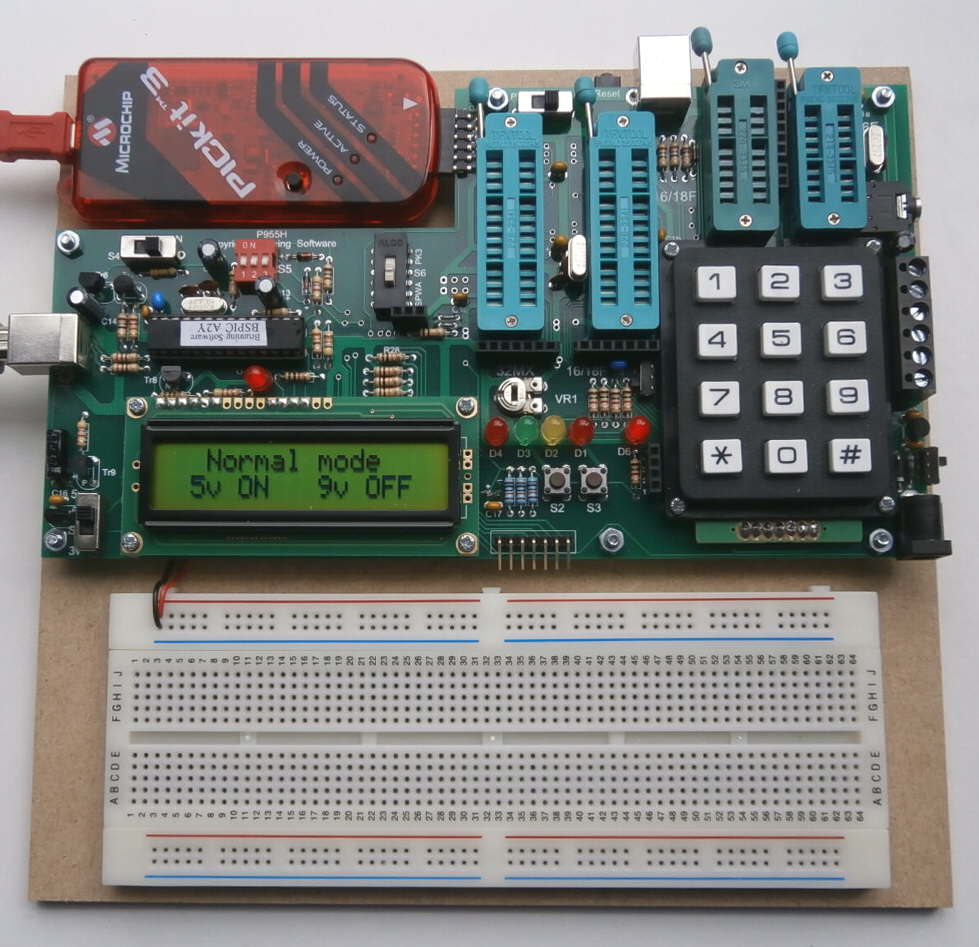
In January 2016 we added one more ZIF socket to our P955 training circuit and renamed it P955H. We have wired the 20 pin ZIF socket so 14 pin and 20 pin PICs can use the LEDs, push buttons, LCD and keypad as do 18 pin and 28 pin PICs. After wiring that part of the circuit the 20 pin ZIF socket still had four unused input/outputs so we added four 14A MOSFETs to the PCB and wired them to the unused pins.
The MOSFETs have a relatively large chip in a tiny package and are rated for 14A continuous current if the case is kept below 25 degree C. In the P955H they are soldered to a large area of copper track which acts as a small heat sync. In the P955H circuit we rate them for 5A maximum continuous total current for all four MOSFETs. i.e. If only one is turned on it can carry 5A continuous but if all four are turned on each one can carry 1.25A continuous current.
The gates of the MOSFETs connect directly to the 20 pin PIC when it is fitted in the 20 pin ZIF socket. The drains (outputs) of the MOSFETs are wired to a block of screw terminals which can be seen in the picture to the right of the keypad. There are six screw terminals. One for +V which connects to the DC input socket at the bottom right of the PCB, four connect to the drains, and the last one connects to ground.